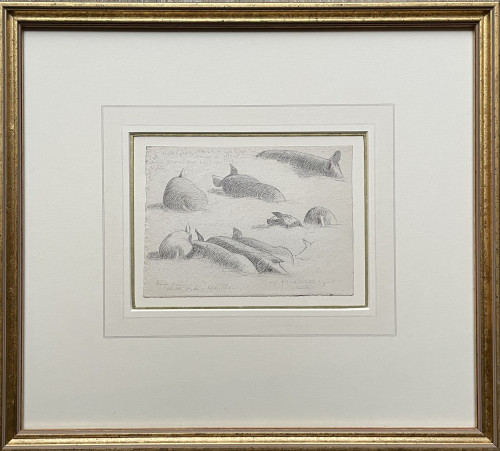- HOME
-
- View All Items
- New Arrivals
- Featured Items
- Artists
-
- View All
- Contemporary
- Birmingham School
- Cotswold Group
- Landscape
- Urban Townscape
- Abstract
- Animals/Birds
- Arts & Crafts
- British Impressionist
- Botanical
- Design/Industrial
- Fantasy/Fairy Subjects
- Female Artists
- Figurative
- Historical
- Illustration/Cartoon
- Marine
- Military/War Artist
- Modern British
- Pre-raphaelite/ Romantic/ Aesthetic
- Nude
- Portrait
- Prints
- Scottish
- Sculpture
- Sporting
- Still Life
- Theatrical
- Interiors/Architectural
-
ARCHIVE
Genre
- View All
- Contemporary
- Birmingham School
- Cotswold Group
- Landscape
- Urban Townscape
- Abstract
- Animals/Birds
- Arts & Crafts
- British Impressionist
- Botanical
- Design/Industrial
- Fantasy/Fairy Subjects
- Female Artists
- Figurative
- Historical
- Illustration/Cartoon
- Marine
- Military/War Artist
- Modern British
- Pre-raphaelite/ Romantic/ Aesthetic
- Nude
- Portrait
- Prints
- Scottish
- Sculpture
- Sporting
- Still Life
- Theatrical
- Interiors/Architectural
- ARTISTS
- Online Exhibitions
- Events
- About
- Contact
- Home
- Medium
- Watercolour & Drawing
- Temples at Evening
Temples at Evening
Temples at Evening
Born Constance Lascelles, she was the eldest daughter of the 4th Earl of Harewood and grew up at Harewood House, Yorkshire. In 1872 she married Beilby, 3rd Lord Wenlock and went to life at Escrick Park near York. Largely self-taught, although she is said to have had some tuition from Burne-Jones, painting was her life long passion. She was said to have commented about marriage: “I don’t really mind very much whom I marry but I will marry someone ”¦ who will let me have proper drawing lessons.” She and her husband were associated with the group of intellectual and aesthetically minded aristocrats known as The Souls, which also included the portrait artist, Violet, Duchess of Rutland in their number. In 1891 her husband was appointed Governor of Madras and they lived in India until 1896. In the Indian landscape, with its dramatic lighting, she found the perfect subject for her painting. They would spend the cooler months in the exotic southern states and retired to the mountains of the Himalayas to escape the summer heat. She was inspired by the dramatic lighting of India: “The intensity of light and the quality of its colour in South India gives to the inhabitant of the Northern countries an impression of being on some other planet, much nearer to the sun. As in all countries there is a great beauty in the long shadows of the early morning, and late afternoon; but the moment of supreme enchantment is in the half-hour before sunrise and after sunset. In the evening, after the sun has sunk below the horizon, while a veil of dusk is falling over the land and sea, a new light spreads over the western half of the sky, at first golden and orangey, slowly deepening to crimson and gradually as night prevails over the upper sky becoming intense scarlet along the horizon. In the dawn this process is reversed, beginning with crimson light and changed to gold until the sun appears bringing full daylight and long shadows.” It is not known whether the present work, dated 1883, and therefore prior to their official appointment in Madras, is the result of an earlier trip to India or whether it is a retrospective view painted later than the date suggests. It is in its original, ornately carved, ebony frame similar to others made for Lady Wenlock by the students at the School of Art in Madras. A prolific watercolourist, she painted mainly landscapes, many of her Yorkshire homes and of her travels in Italy, Egypt and above all of India. The majority of her paintings are still in the ownership of her descendants. An exhibition of her work was held at Harewood House in 2001.
Dimensions:
Thank you for your enquiry.
We will get back to you soon.
Please create wishlist to add this item to
RELATED ITEMS
















